Want More Legroom? How to Pick the Best Economy Seats
11 min readWhether you’re hopping on a short domestic flight or flying eight hours or more overseas, a comfortable seat is everything. A few extra inches of legroom (or shoulder room) can make all the difference.
Finding the best seat, though, is a challenge: Even in economy, seats aren’t created equally. Cabin configurations and legroom vary wildly between airlines and even from one aircraft to another – heck, even from row to row. So while you might want to avoid flying ultra-low-cost carriers with knee-crunching legroom like Spirit or Frontier, theres much more to it.
Keep reading for our breakdown of how to pick the best seat on the plane, which airlines regularly offer the most spacious seats, and what else you need to consider so you can stretch out … even if you’re sitting all the way in the back of the plane.
Get to Know Your Plane
We’re not even trying to be snobby, we’re just being picky. And you should be too.
Knowing what aircraft you’re actually flying on is crucial to having a comfortable experience on your next flight. No one likes being stuck in a middle seat between strangers fighting for the armrests, right?
Being picky with what plane you’re flying makes a world of difference, because some planes are just more comfortable than others. And lucky for you, Google Flights makes it easy to know what plane you’ll be flying.
When you search for a flight, you can easily view what aircraft you’ll be flying on by clicking the drop-down arrow on the right-hand side by each flight option.
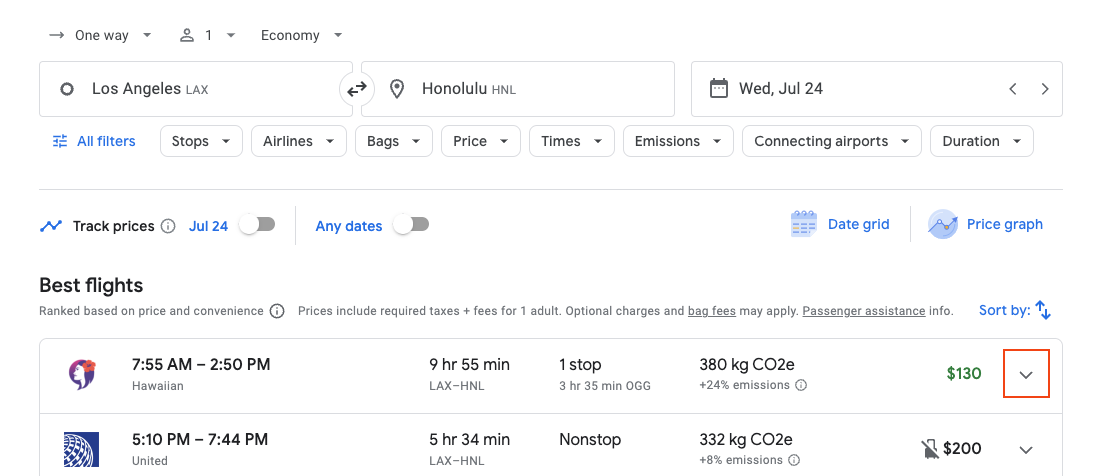

For each segment of your trip, Google Flights will display the specific aircraft that you’ll be flying on. You’ll need that information to search the seat map of that specific aircraft to see what the seat configuration is like.
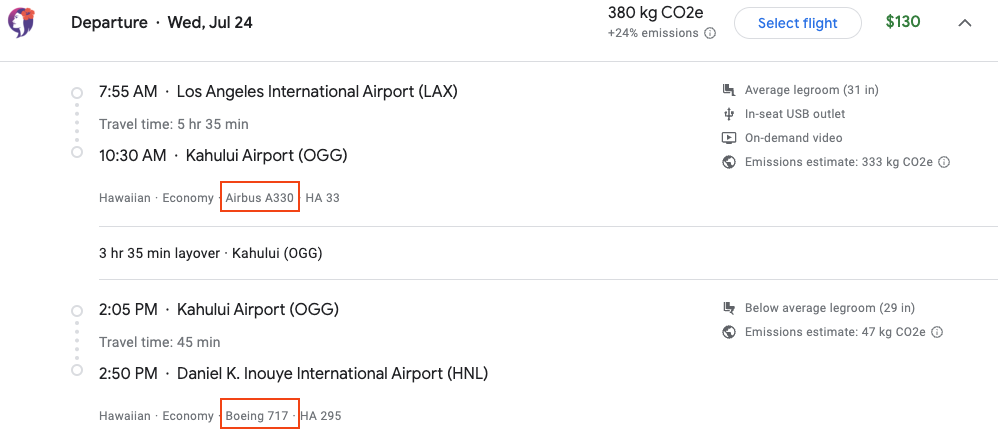

I like to plug in the name of the aircraft and do a quick search for the seat map directly via Google. For example, just type in “Airbus 330 Hawaiian Airlines seat map” and click on the airline’s website. SeatGuru was our go-to way, but that site is woefully outdated now. You can also pull up the aircraft type on aeroLOPA.
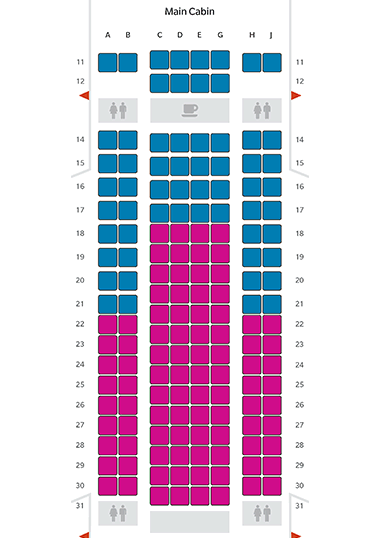

On Hawaiian’s website, they provide a detailed map of their seating chart, with an economy cabin configured in 2-4-2: There are sections of two seats on either side, with a center section of four seats in the middle.
That’s an ideal setup for couples, travel companions, and families travelers together – heck, even solo travelers!
- If you’re flying alone, you won’t be stuck in a middle seat – just pick a seat on either section along the windows.
- Those two-seat sections along the side are great for couples, as you get your own two seats together – no need to worry about climbing over strangers to step out into the aisle.
- Those four-seat sections in the center can be great for families and large groups traveling together.
That’s the beauty of the 2-4-2 configuration: Everyone wins! It’s worth seeking out this specific kind of seatmap. It might not guarantee you more legroom, but having one of those two- or four-seat section to yourself helps makes a flight more comfortable.
Here are a few different aircraft types that are worth keeping in mind for your flights:
- Unless you’re flying on a smaller regional jet, most domestic flights will be on Airbus A320s or Boeing 737s – both with identical 3-3 configurations in economy
- But the Airbus A220 is a great exception: The economy cabin is laid out in a 2-3 configuration, and that two-seat section is great for passengers. In North America, only Delta, JetBlue, Breeze Airways, and Air Canada fly the A220.
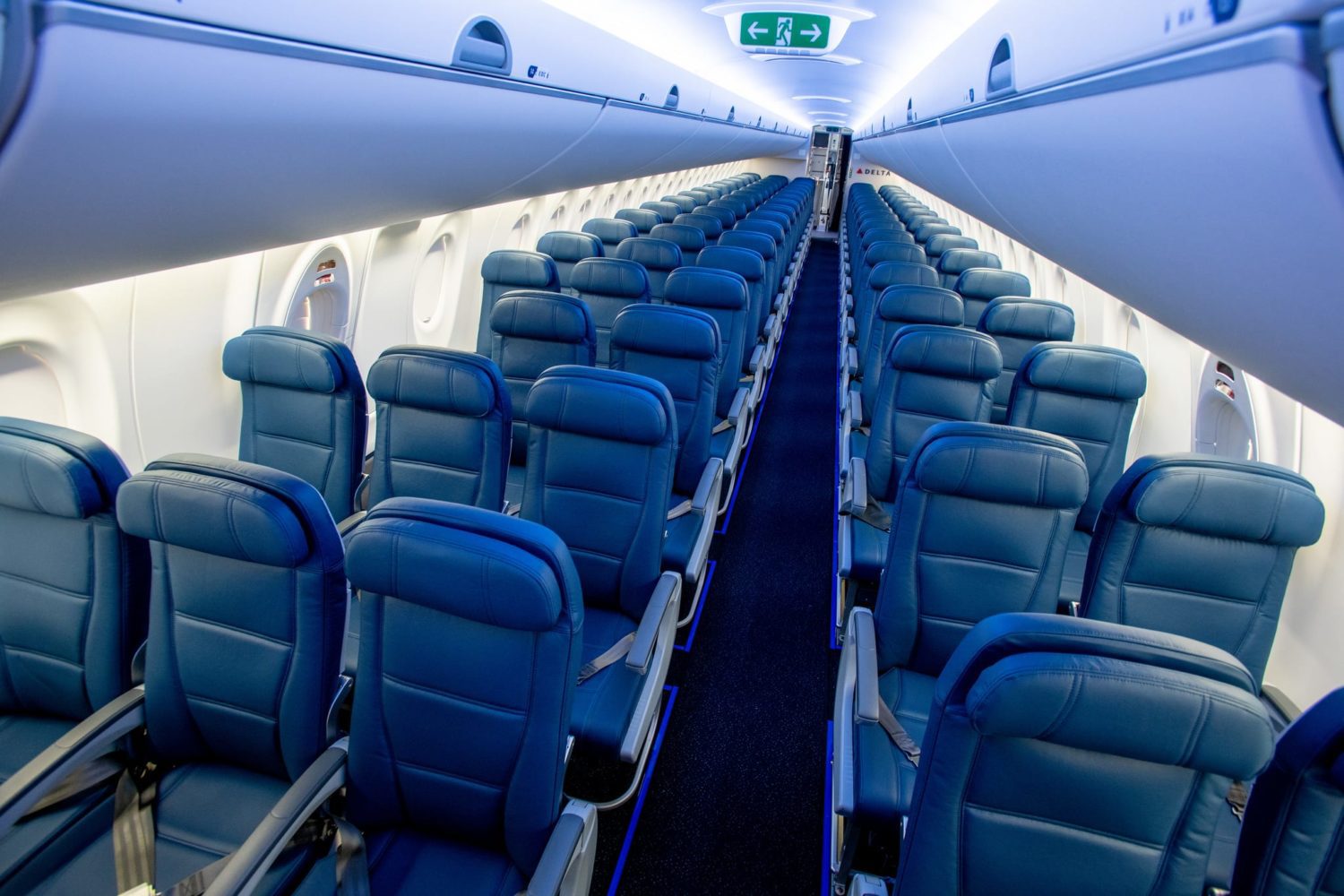
- For long-haul flights on widebody jets, any Airbus A330 will have that prized 2-4-2 layout in economy
- Boeing 767s are often much older but they have a 2-3-2 layout in the economy cabin, so you can still snag those two-seat sections if you want.
- Travelers love Boeing 787s because the cabins aren’t nearly as dry, helping you fight jet lag. But there’s a tradeoff: Most airlines cram nine seats into each row of the economy cabin, so each seat is narrower than what you’ll get on other jets.
- The double-decker Airbus A380 might have a whopping 10 seats in each row of economy (laid out 3-4-3), but these planes are so massive that the seats onboard are still far roomier than most.
Get the 411 on Your Seats, Too
Whether I’m flying coach or business class, I always make sure to check what plane I’m flying on.
For years, SeatGuru was our go-to tool to pick the best seat on the plane, with color-coded seat maps that steer you toward seats with extra legroom … and away from those without a window or that don’t recline. But nowadays, SeatGuru is often inaccurate or out-of-date – especially after the website seemingly stopped updating within the last year or two.
Still, it can be a useful starting point. And Seatguru makes it easier to do so: You can just tap in your flight information and pull up a seat map like this:
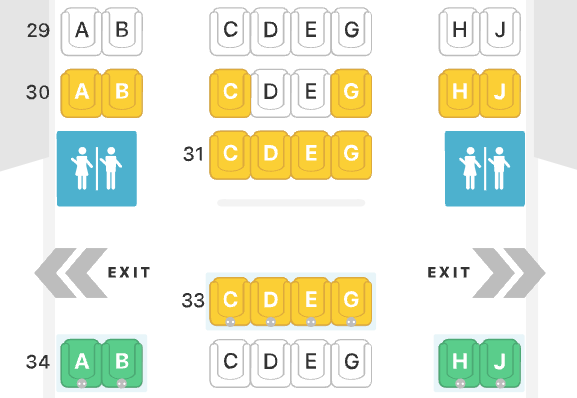

With the yellow seats on this plane, you’ll be very close to bathrooms, which will be noisy and bothersome if you’re trying to get some sleep. Green seats often indicate enhanced legroom with exit rows and bulkhead seats, but we’ll get to that later.
But you can’t always count on Seatguru to be up-to-date anymore. That’s why we also love aeroLOPA, which has some seriously detailed and beautiful seat maps for many of the biggest airlines on the planet.
It’s not a perfect tool: You’ll need to know exactly which type of plane you’re flying (and not just a Boeing 777, but a specific Boeing 777-200LR, for example) and that’s not always so easy to work out.
But the tradeoff is an incredibly detailed look at what your plane will look like, from seats that are missing a window to the exact location of bulkhead seats, bathrooms, bassinets, galleys, and more. Here’s a Lufthansa 747-8i as an example.


Some – but not all – planes also have an absolutely nerdy amount of additional information about the seats and equipment onboard from nose to tail… all the way down to the manufacturer of the seats. For example, you get all the basics about the Qatar Qsuites onboard the airline’s Airbus A350-1000 as well as the legroom, seat width, and more flying Qatar Airways Economy, too.
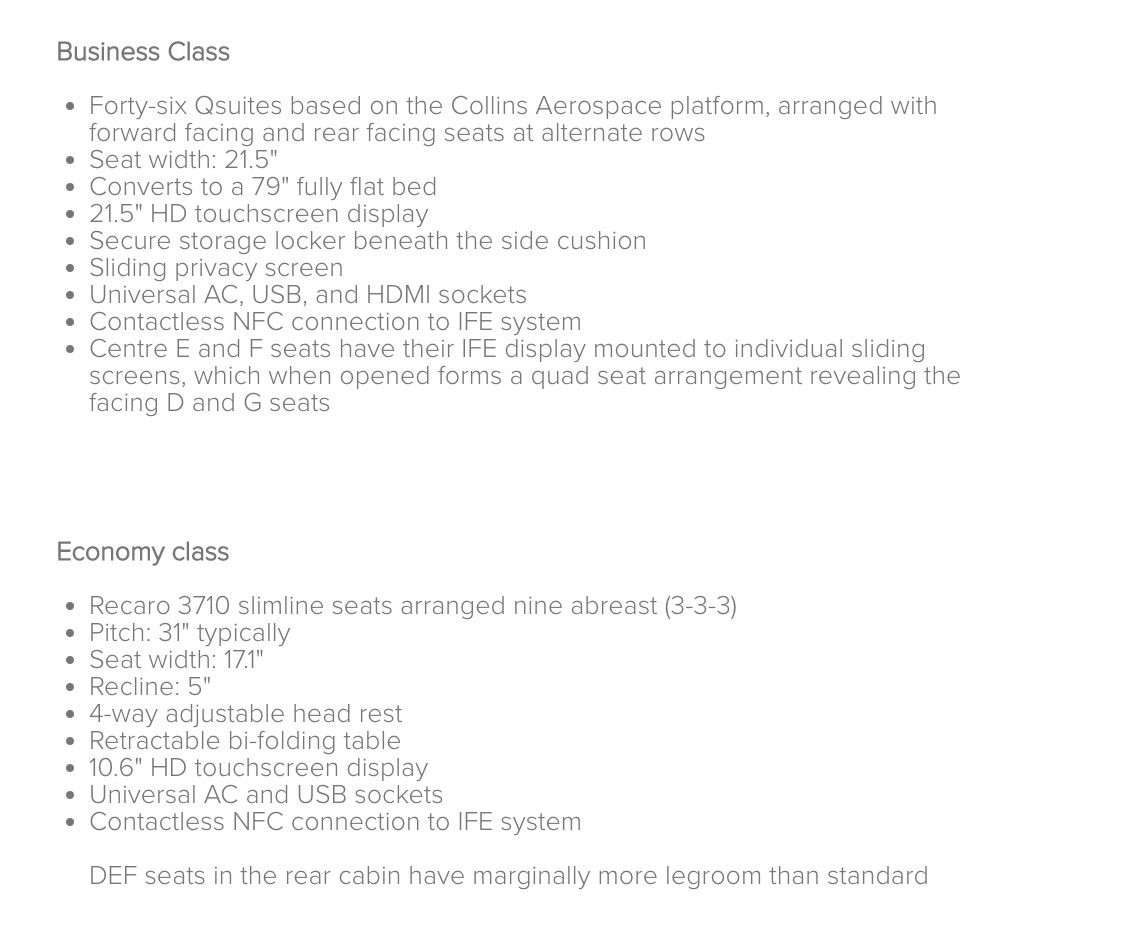

How to Get the Most Legroom On Your Next Flight
Having enough legroom on a flight could make the difference between it being enjoyable or an incredibly torturous trip.
Let’s go over a few key considerations to remember to score the most legroom on your next flight.
Do Your Research
When you make your initial search on Google Flights, it will display the average legroom of that particular flight.


But you’ll have to click through each flight manually to see how much legroom each flight has. There’s a browser extension that makes this search tool even more powerful if you’re looking to fly for a bargain without sacrificing comfort.
If you’re using Google Chrome as your web browser, add the Legrooms Extension for Google Flights. The free tool quickly displays a ton of additional, useful information about the flights you’re looking at – including how much legroom your flight will have. Let’s take a look at what it can show you.
We’ll use a simple search from Minneapolis-St. Paul (MSP) to Denver (DEN) to demonstrate what this Legrooms extension can do.
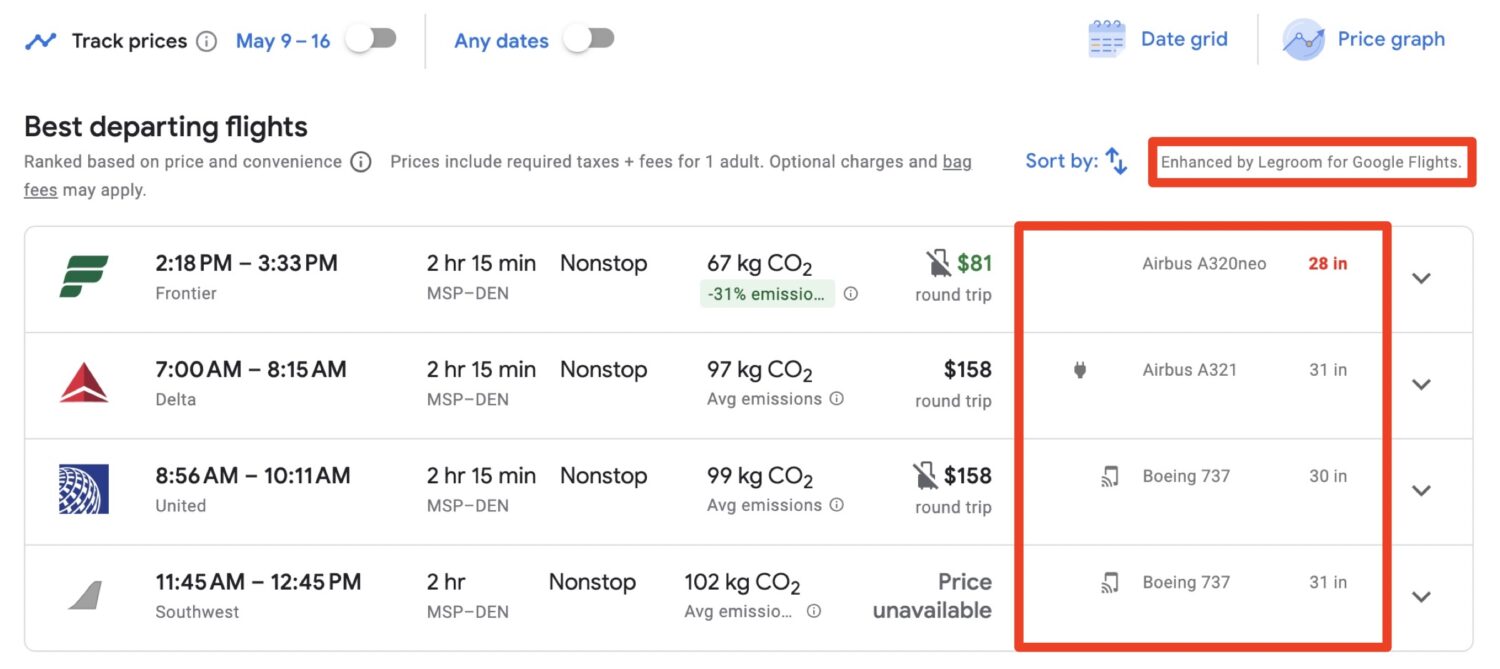

Read our full guide to using Google Flights to find the cheapest flights, every single time!
The Legrooms extension immediately shows you plenty of useful information about each flight, from the plane type to the legroom to whether you’ll be able to charge your devices onboard. While airlines might have this information when booking direct, it’s not always easy to find – especially the legroom at your seat. With the Legrooms extension, you can quickly get a look at everything you’ll get on your flight.
Plus, you can click on the individual flights to glean even more data about the Wi-Fi onboard, if you have in-seat power and/or USB outlets, if there’s live TV and more.
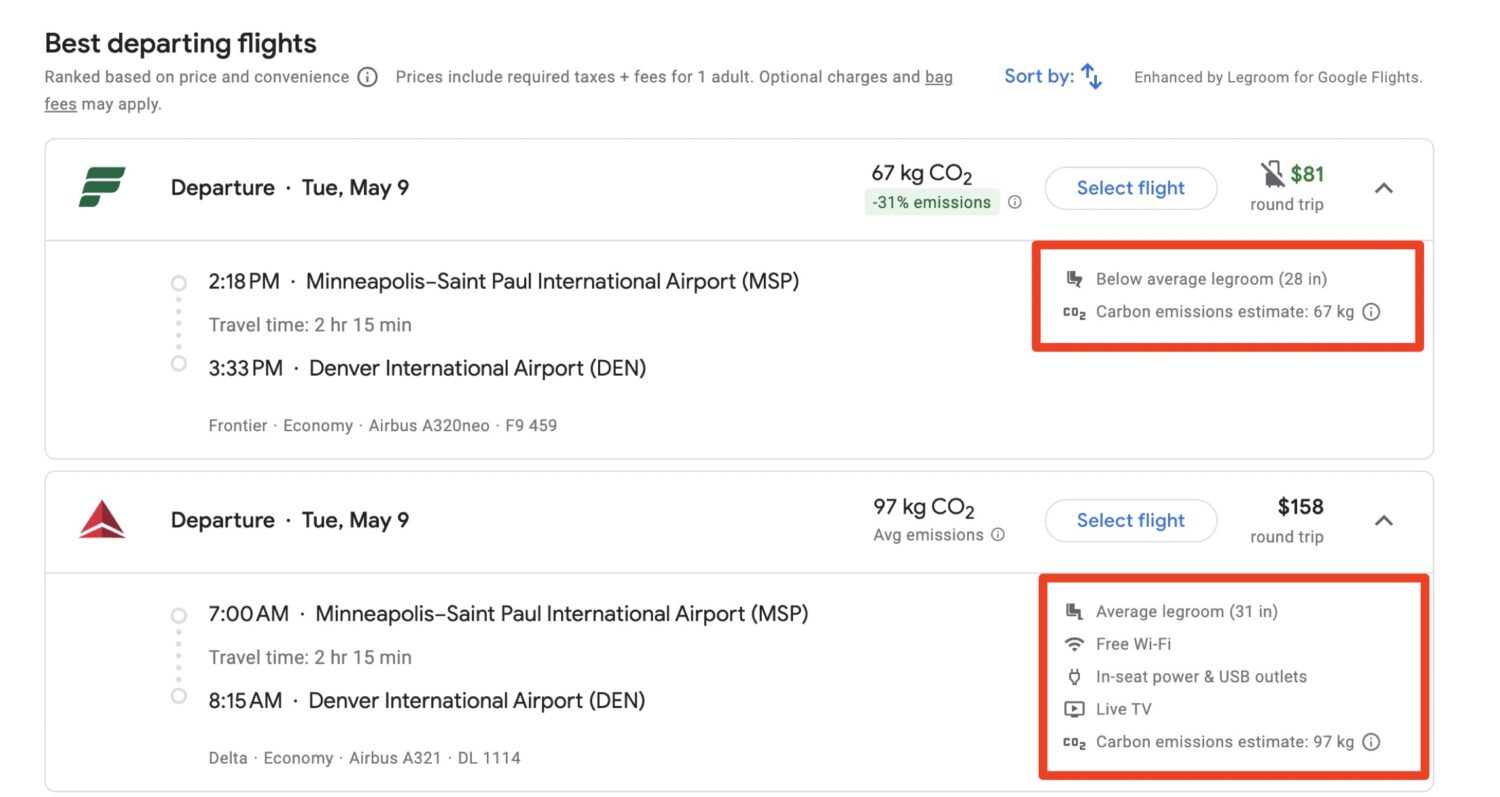

Most importantly, though: How much legroom will you actually have? These days, 31 inches of pitch or so is the norm … though that’s as low as 28 inches on budget airlines like Spirit and Frontier, though those figures don’t account for the extra space passengers get from those airlines’ curved and ultra-slimline seats.
There’s no better way to get a ton of information about the flights you may book. Just keep one thing in mind: Airlines can change which type of plane operates your flight at a moment’s notice. So while Legrooms can help prepare you for what’s in store, it won’t always reflect what plane you actually board that day.
Select a Bulkhead or Exit Row Seat
Sounds simple enough, right? Not quite. Since extra legroom is seen as a premium upgrade, you’ll usually have to pay extra for it. But if you physically need the extra legroom because you’re really tall or just want the extra comfort, paying the premium just might be worth it.
Elite status might score you a preferred seat, too. If you are a frequent flyer who has worked your way up to earn elite status, you might be entitled to a free or discounted seat selection in a preferred row with more legroom.
Choosing the bulkhead row (a.k.a. the front row of a section, usually butting up against a cabin divider or lavatory) means more legroom. If you are able to score a seat in the front, you won’t regret your decision. It’s roomier and you’ll be able to get off the plane quicker, too.
Choosing an exit row also means more legroom. If you are able to score an exit row seat, you will also get to stretch out a little more. For larger planes, there might be more options to choose from in different sections than available on smaller jets. These seats could have more legroom than bulkhead seats in some cases.
Book a Main Cabin Ticket
You might save some money when you book a basic economy ticket rather than the spendier, main cabin fare. But the restrictions of basic economy – especially when it comes to seat assignments – mean it just might not be worth the savings if sacrificing your comfort.
You don’t get to choose your seats for free with basic economy tickets – that’ll cost you extra. And if you don’t pay up, you’ll get assigned a seat randomly … often in a middle seat between two strangers.
If comfort is your top priority, skip basic economy and pay a few bucks more for a main cabin economy fare that lets you pick your seat for free.
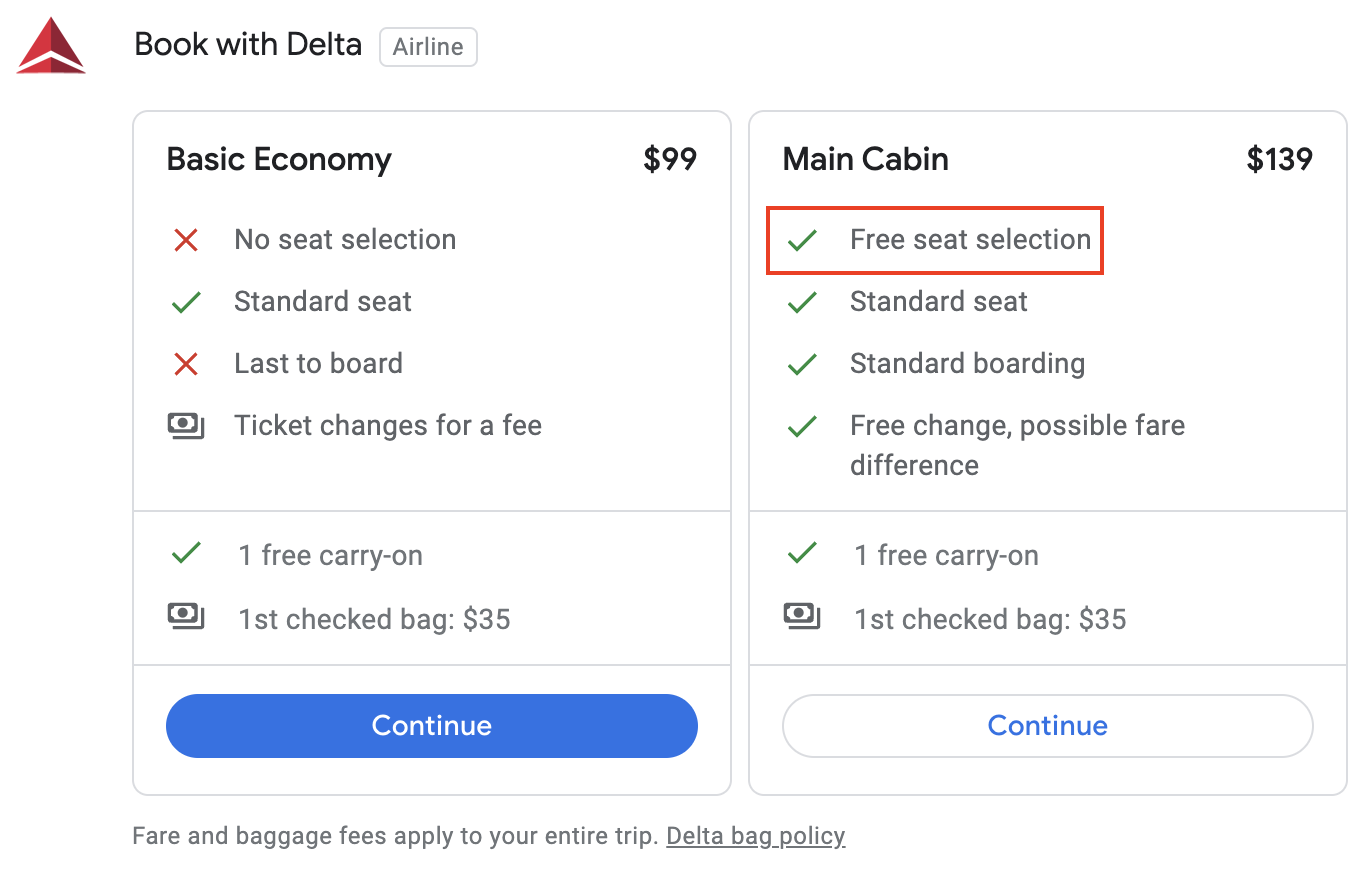

Which Airlines Have the Best Economy Seats?
U.S. Airlines with the Best Legroom
So, which airlines have the best legroom? That’s not too hard to discern when you look at the numbers using the tools above.
In the U.S., the airlines JetBlue and Southwest consistently offer the most legroom with an average of around 32 inches per seat, although you can find a few JetBlue planes with 33 inches of legroom. Alaska and Hawaiian seats typically have 31 or 32 inches of legroom, too.
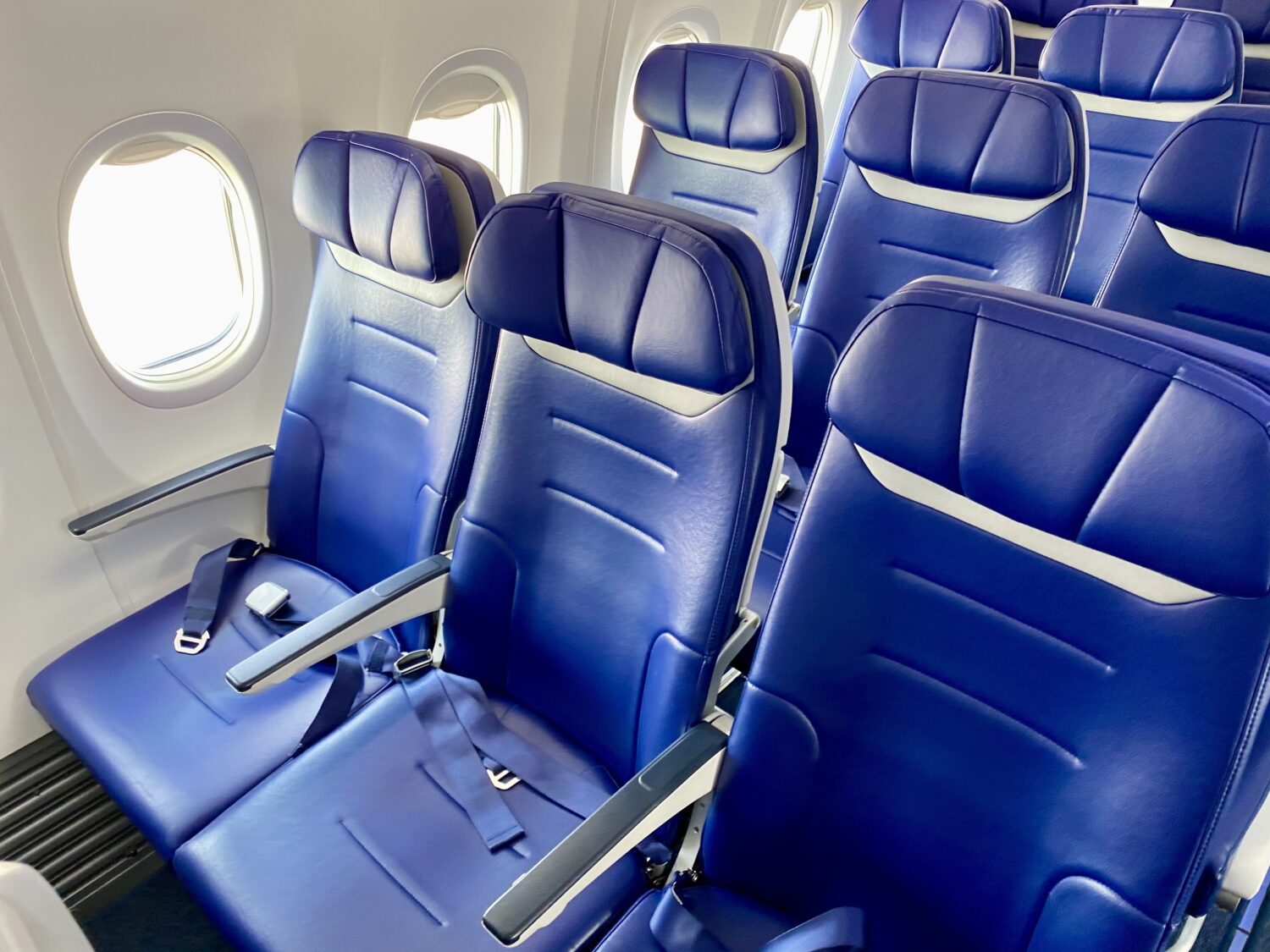

Delta, American, and United all offer between 30 and 32 inches of legroom depending on the aircraft, with Delta typically sticking closer to a full 32 inches of legroom. All three of those airlines fly diverse fleets, so it’s best to check the Google Flights Legroom extension before you book to see what you’re actually getting.
U.S. Airlines with the Best Seat Layout
Yes, legroom matters. But I think the seat layout on an aircraft can matter even more: It dictates how many people you’ll be sharing your space with on the plane and where you’ll find the best seats.
That’s why, when flying U.S. airlines, I prefer to fly Delta Air Lines, Hawaiian Airlines, or any of the airlines’ regionally operated jets. The cabin configurations are just more passenger-friendly, if you ask me.
When flying Delta, I prefer to fly on a Boeing 767 or Airbus A330. You’ll usually find these planes on longer haul flights to Hawaii or internationally. And it’s well worth the extra research to find these jets, as you get a generous 2-3-2 or 2-4-2 seat configuration, respectively.
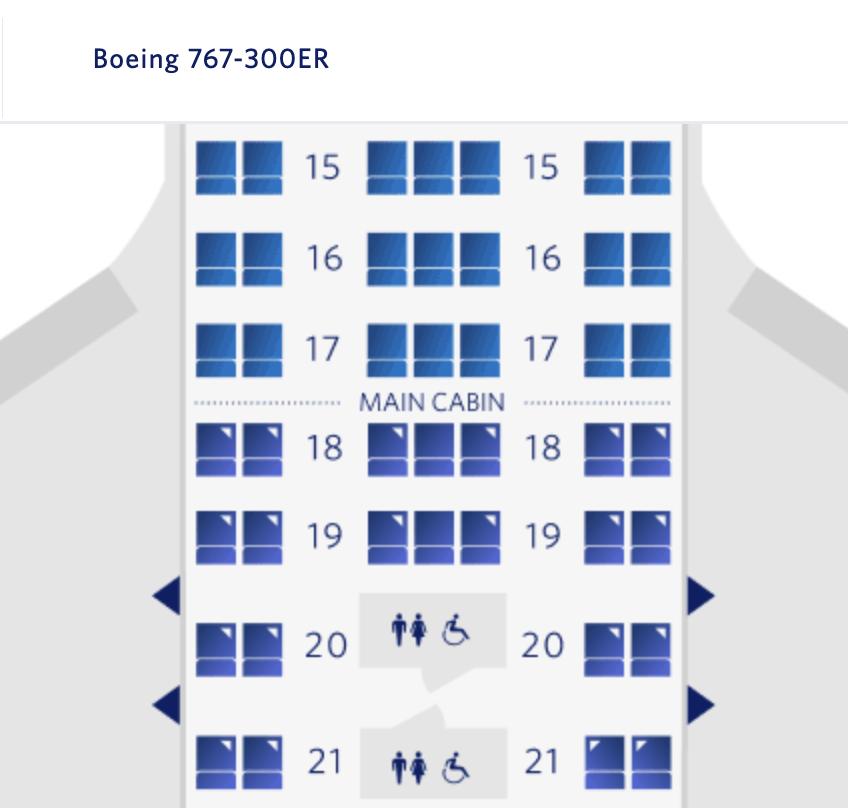

When flying economy on Hawaiian, you’ll want to fly on an Airbus A330. With this aircraft, you’ll get a 2-4-2 seat layout. While the Boeing 787 boasts brand-new first class suites, the 3-3-3 seat configuration in economy makes for a tighter squeeze.


International Airlines with the Most Legroom
It should be no surprise that many international carriers offer more legroom than their U.S. counterparts. And some rise above the rest.
We have to highlight Japan Airlines’ economy seats.
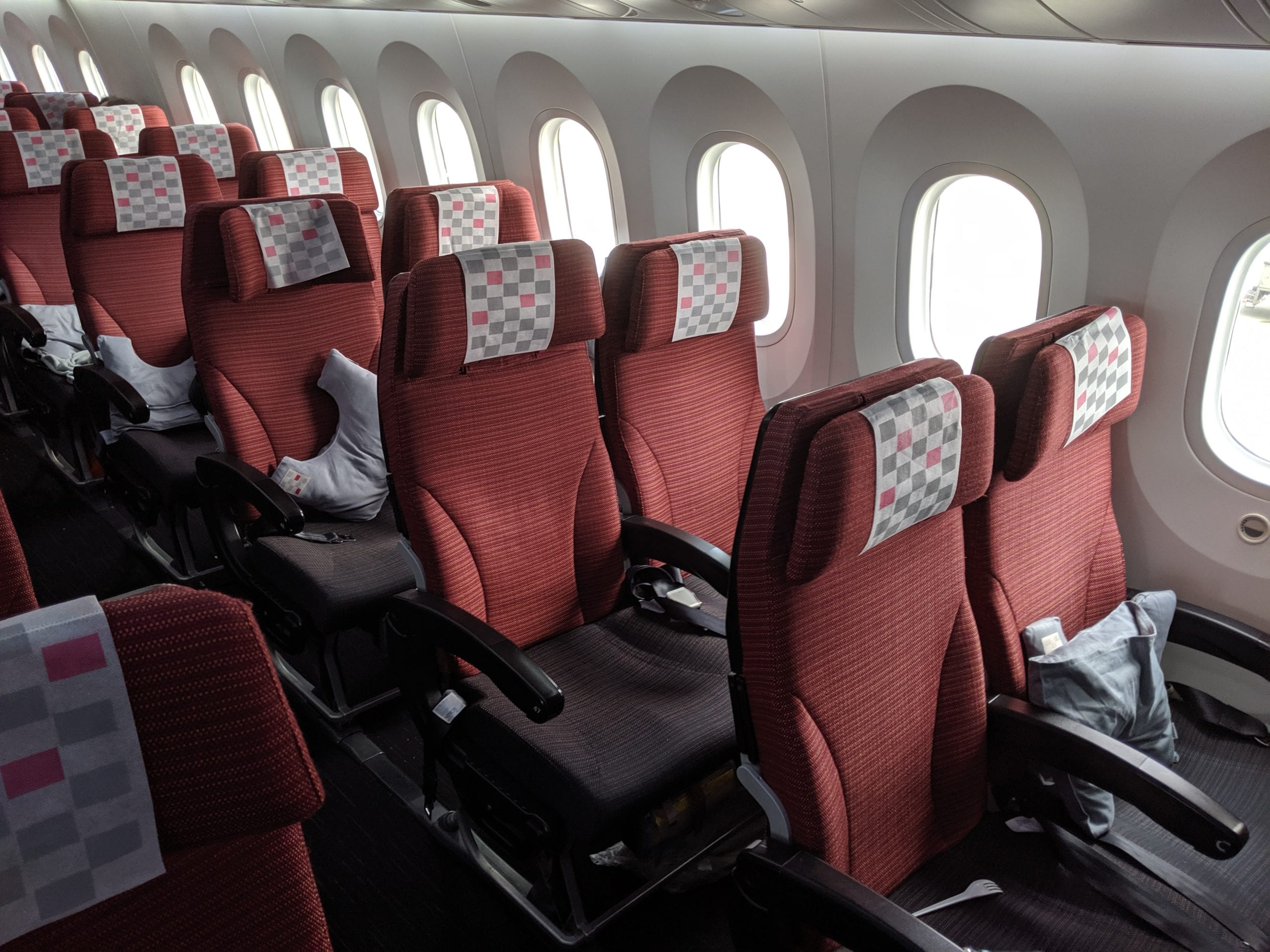

Most transpacific JAL flights have a super-roomy 34 inches of legroom, the same as you’d get in Economy Plus on United, Main Cabin Extra on American, or Comfort Plus on Delta in the U.S. But unlike those seats, you don’t have to pay extra – that’s the standard for economy.
Elsewhere in Japan, All Nippon Airways (ANA) also has between 32 and 34 inches of legroom on its transpacific flights, as does Taipei-based EVA, Emirates, and Singapore Airlines.
While those airlines above offer undoubtedly the most room, major international carriers like Air France, Korean Air, Cathay Pacific, SWISS, and Vietnam Airlines all boast 32 or more inches of legroom in economy, too. That’s on par or better than most U.S. airlines.
International Airlines with the Best Seat Layout
Again, we have to highlight Japan Airlines. On their Boeing 787s that frequently fly between the U.S. and Japan, you’ll get a generous 2-4-2 seat layout if you fly on their Boeing 787.
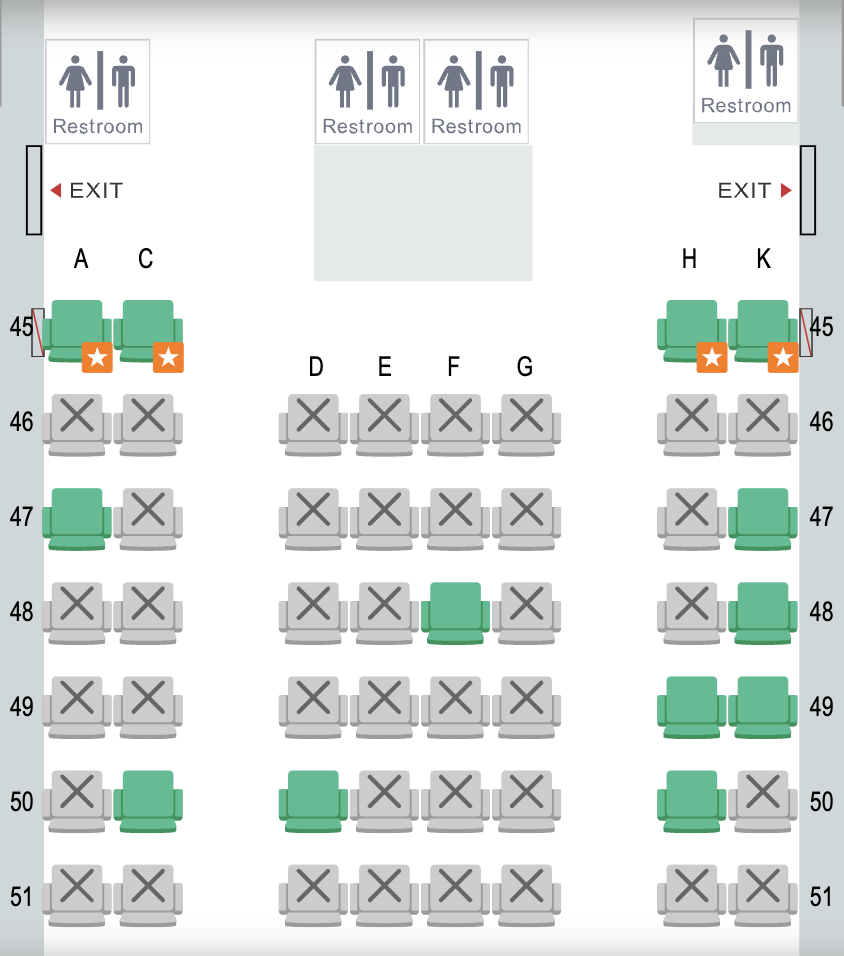

Considering the airline is ranked as the best economy class when it comes to legroom. You can’t go wrong with flying on the aircraft with this generous seat configuration. And even as other airlines have shoved another seat in each row onboard their Boeing 777s, Japan Airlines still offers an economy cabin with 3-3-3 seating.
Emirates, Qatar Airways, and Singapore Airlines also stand out for their economy cabins – especially on the Airbus A380. While there are a whopping 10 seats in each row of economy on those planes, these double-decker jets are so wide that the seats are still roomier than most.
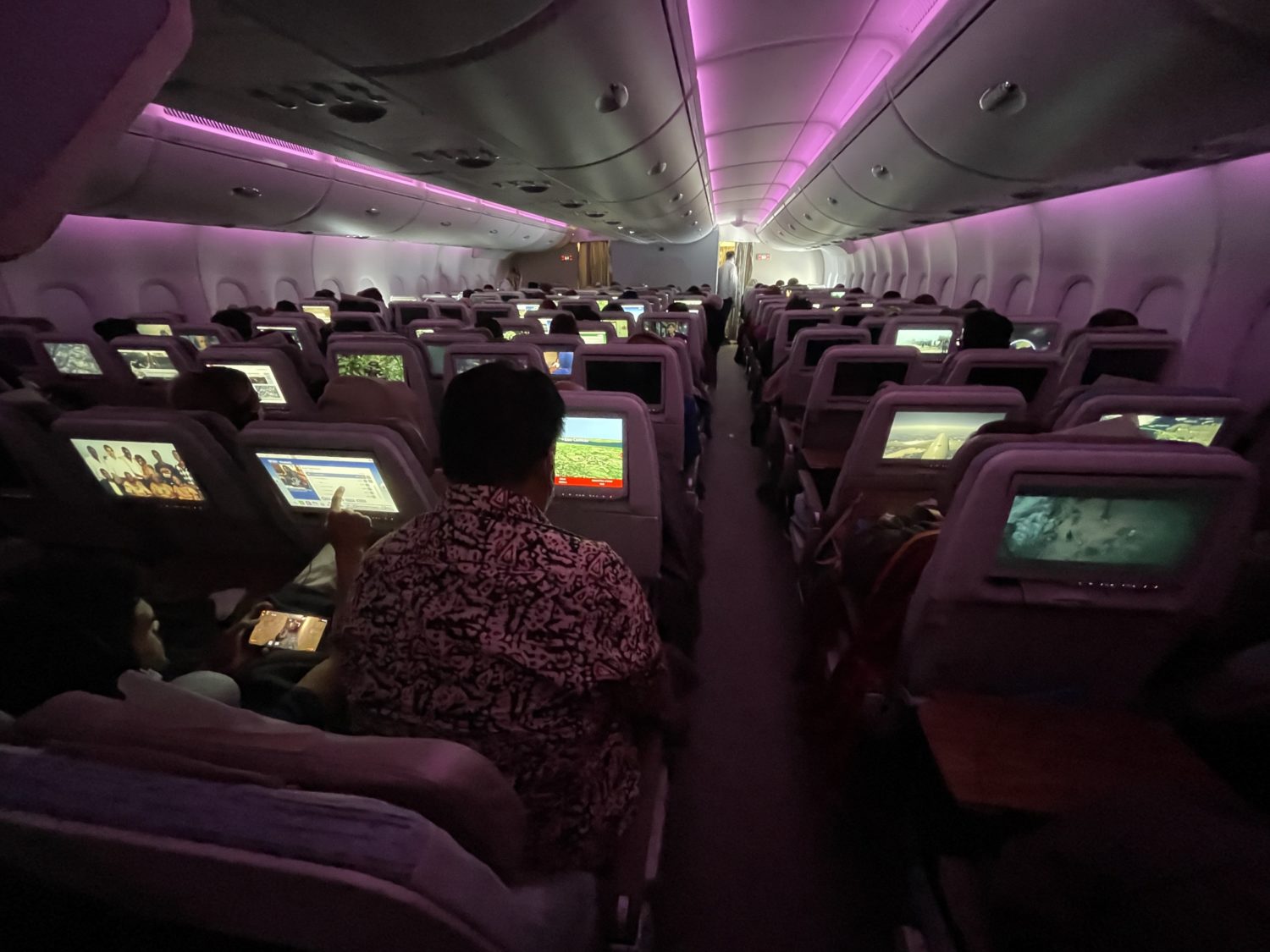

With a little extra research, you’ll be in full control of how you travel by air and maximize your comfort in flight by picking the best seat on the plane for you.
Bottom Line
Sometimes, it takes a little legwork to get more legroom.
Finding the airlines with the most legroom or best seat map is as simple as downloading the Legroom extension on Google Chrome, navigating sites like aeroLOPA or SeatGuru, a simple search on Google Flights, and having a general idea of which airlines do it best.
Don’t let yourself get crammed into a knee-crunching seat the next time you fly or get stuck in the middle. Let yourself stretch out and travel comfortably instead!



